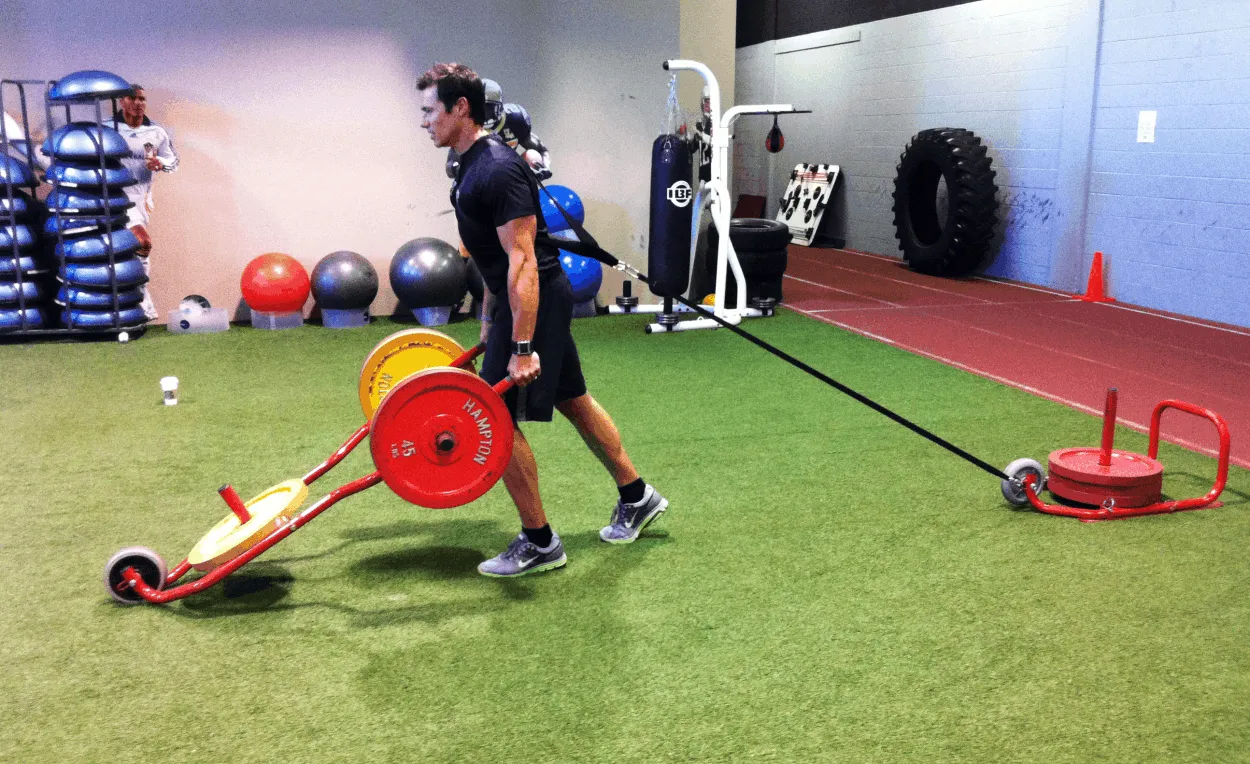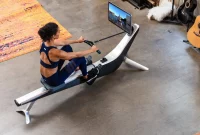Discover the future of sports with the latest innovative equipment designed for the modern athlete. From cutting-edge wearable technology to advanced training tools, this article explores the game-changing gear revolutionizing how athletes train, compete, and excel. Unleash your full potential with these groundbreaking innovations.
The Latest in High-Tech Sports Gear
In today’s fast-paced world, technology has revolutionized the sports industry, providing athletes with innovative equipment to enhance their performance. From state-of-the-art wearable devices to advanced training gear, here are some of the latest high-tech sports gear that are transforming the way athletes train and compete.
Smartwatches and Fitness Trackers
Smartwatches and fitness trackers have become essential tools for athletes, allowing them to monitor their heart rate, track their distance, and analyze their performance in real-time. These devices provide valuable insights and help athletes optimize their training routines.
High-Performance Footwear
The advancements in shoe technology have led to the development of high-performance footwear designed to enhance athletes’ speed, agility, and overall comfort. From lightweight running shoes with energy-returning midsoles to basketball sneakers with responsive cushioning, these shoes give athletes a competitive edge.
Virtual Reality Training
Virtual reality (VR) is revolutionizing sports training by providing athletes with immersive simulations and interactive experiences. VR technology allows athletes to practice in realistic virtual environments, helping them improve their decision-making skills, reaction times, and situational awareness.
Smart Clothing
Smart clothing is embedded with sensors and microchips that can track body movements, measure muscle activity, and provide feedback on posture and technique. This technology enables athletes to optimize their form, prevent injuries, and maximize their performance during training sessions.
Biometric Monitoring Devices
Biometric monitoring devices, such as heart rate monitors and oxygen saturation sensors, provide athletes with real-time data about their physical condition. This information allows athletes to make adjustments to their training intensity, recovery periods, and overall fitness levels.
Advanced Training Equipment
The world of sports equipment continues to evolve with the introduction of advanced training tools. This includes smart balls for soccer training that can track kicking power and accuracy, smart golf clubs that analyze swing mechanics, and high-tech tennis rackets that measure shot speed and spin.
With the latest high-tech sports gear, athletes have the opportunity to take their performance to new heights. These innovative tools not only help athletes track their progress but also provide valuable insights to optimize their training strategies and achieve their goals.
Equipment Adaptations for Different Skill Levels
When it comes to sports equipment, innovation has played a significant role in enhancing the performance of athletes across different skill levels. Whether you are a beginner or an elite athlete, having access to the right equipment can make a world of difference in your training and competition. Here are some innovative sports equipment designed to cater to athletes of various skill levels:
1. Adjustable Resistance Bands
Resistance bands are a popular choice for athletes looking to strengthen specific muscle groups. For beginners, adjustable resistance bands can be beneficial as they allow for gradual progression. By starting with lower resistance and gradually increasing it over time, beginners can safely build strength and avoid injury.
2. Smart Cycling Sensors
Cycling has become more efficient with the development of smart sensors that can be attached to bikes. These sensors provide real-time data on speed, cadence, power output, and more. They are particularly helpful for beginners who are looking to track their progress and improve their cycling technique.
3. Low-Compression Tennis Balls
For novice tennis players, using low-compression balls can make the learning process easier. These balls have a lower bounce and slower speed, allowing beginners to develop better control and technique. As players advance to higher skill levels, they can gradually transition to regular tennis balls.
4. Customizable Golf Clubs
Golf clubs that can be customized to fit an individual’s swing mechanics and skill level have revolutionized the game. With adjustable club heads, shafts, and grip sizes, golfers of all abilities can optimize their equipment to enhance accuracy, distance, and overall performance.
5. Weighted Training Shoes
Weighted training shoes are designed to add resistance and increase strength during workouts and training sessions. They can be beneficial for athletes across different skill levels by helping improve speed, agility, and lower-body strength. Beginners can start with lighter weights and gradually progress as their fitness level improves.
6. Smart Baseball Gloves
Smart baseball gloves with built-in sensors can provide valuable data on catching technique, hand positioning, and reaction time. These gloves can be particularly helpful for beginners who are learning the fundamentals of fielding, as well as advanced players looking to fine-tune their skills.
As the world of sports continues to evolve, so does the equipment designed to meet the needs of athletes at different skill levels. Innovations in sports equipment have made it easier for beginners to get started, while also providing advanced athletes with tools to push their limits and achieve higher performance levels.
The Role of Data Analytics in Equipment Design
When it comes to designing innovative sports equipment for the modern athlete, data analytics plays a crucial role. Thanks to advancements in technology and the rise of big data, designers now have access to a wealth of information that can inform their decision-making process and lead to the creation of cutting-edge products.
One key aspect where data analytics is particularly valuable is in understanding the needs and preferences of athletes. By collecting and analyzing data on athlete performance, biomechanics, and injury rates, designers can gain insights into what features and functionalities are most desired. This allows them to tailor their designs to better meet the demands of athletes and enhance their performance.
Data analytics also enables designers to identify patterns and trends that may not be immediately apparent. Through analyzing data from various sources, such as sensors embedded in equipment or performance tracking devices, designers can uncover correlations between specific design elements and performance outcomes. This knowledge can then be used to optimize equipment design, ensuring that it provides the maximum benefits to athletes.
Furthermore, data analytics can aid in the iterative design process. By collecting and analyzing feedback from athletes who are actively using the equipment, designers can identify areas for improvement and make data-driven adjustments. This iterative approach ensures that the final product is not only innovative but also tailored to the specific needs of athletes.
In conclusion, data analytics has become a game-changer in the field of equipment design for modern athletes. It empowers designers to create products that are informed by real-world data, resulting in superior performance, enhanced safety, and a competitive edge for athletes. By leveraging the power of data analytics, designers can continue pushing the boundaries of innovation in sports equipment.
Eco-Friendly Sports Equipment Options
When it comes to sports equipment, being eco-friendly is becoming a top priority for athletes and sports enthusiasts. As the world becomes more conscious about the environment, innovative options have emerged that prioritize sustainability without compromising performance. Here are a few eco-friendly sports equipment options for the modern athlete:
1. Recycled Materials
Many companies now produce sports equipment using recycled materials. From running shoes made with recycled plastics to yoga mats made from recycled rubber, these products reduce the demand for new resources and help divert waste from landfills.
2. Bamboo Sportswear
Bamboo is a sustainable and fast-growing plant that makes an excellent alternative to traditional fabrics. Some sportswear brands are utilizing bamboo fibers to create comfortable and breathable activewear that is both environmentally friendly and durable.
3. Solar-Powered Gadgets
Incorporating solar-powered gadgets into sports equipment is another great way to go eco-friendly. For instance, solar-powered smartwatches can track activity levels while harnessing renewable energy to keep them charged, reducing reliance on disposable batteries.
4. Biodegradable Balls
For sports involving balls, choosing biodegradable options can significantly reduce the environmental impact. These balls are designed to break down naturally over time, reducing waste and pollution.
5. Energy-Efficient Equipment
Energy-efficient equipment, such as LED-lit sports fields and low-energy-consuming sports lighting, are becoming increasingly popular. These alternatives help reduce energy consumption, minimize carbon footprint, and promote sustainable practices.
In conclusion
The demand for eco-friendly sports equipment is on the rise. By opting for recycled materials, bamboo sportswear, solar-powered gadgets, biodegradable balls, and energy-efficient equipment, athletes can actively contribute to a more sustainable sporting industry.
The Intersection of Art and Function in Sports Gear
In the fast-evolving world of sports, athletes are constantly seeking innovative sports equipment that not only enhances their performance but also reflects their individuality. This search has led to the intersection of art and function in sports gear, where aesthetics and performance go hand in hand.
Modern athletes now have access to a wide range of sports gear designed to combine style with functionality. Sports equipment manufacturers are collaborating with artists and designers to create unique and visually appealing gear that stands out on the field or court. From vibrant colors to intricate patterns, these products allow athletes to express their personalities while excelling in their respective sports.
However, it’s important to note that the fusion of art and function doesn’t compromise performance. The innovative sports gear being developed possesses cutting-edge technology and materials that enhance an athlete’s abilities. For example, a basketball shoe may feature a captivating design, but it will also incorporate advanced cushioning and stability features to maximize performance and prevent injuries.
The convergence of aesthetics and performance in sports gear is not limited to just shoes or apparel. It extends to equipment like tennis rackets, golf clubs, and even sports helmets. Manufacturers are leveraging innovative designs and materials to optimize the functionality of these products, ensuring athletes have the necessary tools to excel while showcasing their individual style.
The demand for sports gear that combines artistry and functionality continues to grow as athletes look for ways to stand out and express themselves on and off the playing field. This ongoing collaboration between artists, designers, and sports equipment manufacturers pushes the boundaries of what is possible, resulting in gear that not only performs exceptionally but also serves as a form of self-expression.
Conclusion
In conclusion, innovative sports equipment has revolutionized the way modern athletes train and compete. These cutting-edge tools have enhanced performance, improved safety, and provided valuable data and insights. From smart helmets to advanced wearables, the integration of technology into sports equipment has paved the way for a new era of athleticism. As technology continues to advance, we can expect even more exciting developments in the world of sports equipment.




